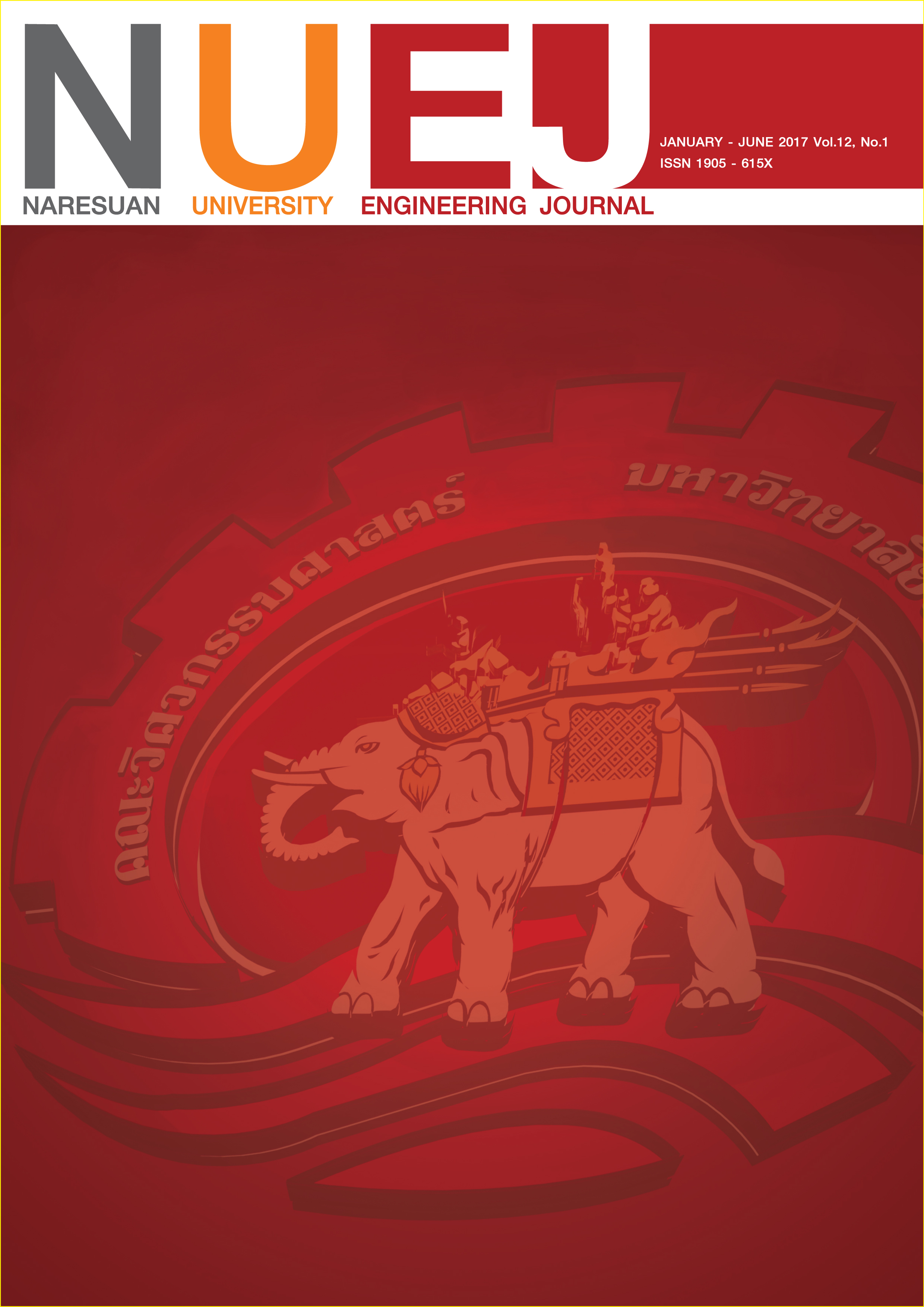The heuristic for mark planning process in a context of mass customization production
Main Article Content
Abstract
Nowadays, garment manufacturers encounter with three major changes which are a progress in communication technology, an occurrence of efficient transportations, and a rapid change in customer requirement. To cope with these three changes, a mass customization production strategy is applied. However, to successfully use such flexible strategy, garment manufacturers should reduce their work-in-process inventory workloads. To include this workload, a sewing schedule is incorporated to reflect a sewing sequence in an assembly line. The purpose of this paper is to develop a heuristic approach that is used to improve a marking plan with respect to a work-in-process inventory workload. A key concept used to develop a heuristic is to rearrange marker patterns of all markers in order to reduce differences among due dates in each marker. Furthermore, this heuristic is divided into two steps, i.e. marker pattern rearrangement and stack rearrangement. To evaluate a performance, 140 problem instances generated based on a major characteristic of a mass customization are tested. Subsequently, all solutions are compared with solutions derived from a Genetic Algorithm based approach which is modified especially for this problem. Compared results show that solutions from the heuristic are better than solutions from a Genetic Algorithm method in 132 problem instances which is equal to 94.3%. Finally, it can be concluded that the heuristic is superior to a genetic algorithm method.
Article Details
References
Amorado, R. M. N. a. A. T. (2015). Application of Lean Manufacturing Tools in a Garment Industry as a Strategy for Productivity Improvement Asia Pacific Journal of Multidisciplinary Research, 3(4), 8.
Bo Dong, H. J., Zheng Li, Kangcheng Dong. (2012). Implementing mass customization in garment industry. System engineering procedia, 3, 9.
Degraeve, Z., Gochet, W., & Jans, R. (2002). Alternative formulations for a layout problem in the fashion industry. European Journal of Operational Research, 143(1), 80-93. doi: http://dx.doi.org/10.1016/S0377-2217(01)00330-7
Degraeve, Z., & Vandebroek, M. (1998). A Mixed Integer Programming Model for Solving a Layout Problem in the Fashion Industry. Management Science, 44(3), 301-310. doi: doi:10.1287/mnsc.44.3.301
Deng, H., Miao, D., Wang, F., Lei, J., Yan-mei, L., Shao-cong, Y., & Shu-ting, Z. Research on Cut Order Planning for Apparel Mass Customization Emerging Research in Artificial Intelligence and Computational Intelligence (Vol. 237, pp. 267-271): Springer Berlin Heidelberg.
Filipi, B., #269, Fister, I., & Mernik, M. (2006). Evolutionary search for optimal combinations of markers in clothing manufacturing. Paper presented at the Proceedings of the 8th annual conference on Genetic and evolutionary computation, Seattle, Washington, USA.
Fister, I., Mernik, M., & Filipic, B. (2008). Optimization of markers in clothing industry. Engineering Applications of Artificial Intelligence, 21(4), 669-678. doi: http://dx.doi.org/10.1016/j.engappai.2007.06.002
Fralix, M. T. (2001). From mass production to mass customization. Journal of textile and apparel, technology and management, 1(2), 7.
Jacobs-Blecha, C., Ammons, J., Schutte, A., & Smith, T. (1997). Cut order planning for apparel manufacturing. IIE Transactions, 30(1), 79-90. doi: 10.1023/a:1007497613410
Jane C. Ammons, C. J.-B., Terri smith, Avril Baker, Bill Warden. (1991). Cut order planning (S. o. i. a. s. engineering, Trans.) (pp. 43): Georgia institute of technology.
M'Hallah, R., & Bouziri, A. Heuristics for the combined cut order planning two-dimensional layout problem in the apparel industry. International Transactions in Operational Research, n/a-n/a. doi: 10.1111/ itor.121
Martens, J. (2004). Two genetic algorithms to solve a layout problem in the fashion industry. European Journal of Operational Research, 154(1), 304-322. doi: http://dx.doi.org/10.1016/S0377-2217(02)00706-3
Md. Mazedul Islam, A. M. K., Md. Monirul Islam (2013). Application of Lean Manufacturing to Higher Productivity in the Apparel Industry in Bangladesh International Journal of Scientific & Engineering Research, 4(2), 10.
Ms.Seung-Eun Lee, D. J. C. C. (1999). Mass-customization methodology for an apparel industry with a future. Journal of Industrial technology, 16(1), 8.
Okuno, H., Ali, M., Bouziri, A., & M'hallah, R. (2007). A Hybrid Genetic Algorithm for the Cut Order Planning Problem New Trends in Applied Artificial Intelligence (Vol. 4570, pp. 454-463): Springer Berlin Heidelberg.
Pine, B. J. (1993). Mass customization : The new frontier in business competition (1 ed.): Harvard Business Review Press.
Puasakul, K., & Chaovalitwongse, P. (10-13 Dec. 2013). The development of heuristic for solving multi objective mark planning problem in garment industry. Paper presented at the Industrial Engineering and Engineering Management (IEEM), 2013 IEEE International Conference on.
R. P. Abeysooriya, T. G. I. F. (2012). Canonical genetic algorithm to optimize cut order plan solutions in apparel manufacturing. Journal of emerging trends in computing and information sciences, 3(2), 5.
R. P. Abeysooriya, T. G. I. F. (2012). hybrid approach to optimize cut order plan solutions in apparel manufacturing. International journal of information and communication technology research, 2(4), 6.
Rose, D. M., & Shier, D. R. (2007). Cut scheduling in the apparel industry. Comput. Oper. Res., 34(11), 3209-3228. doi: 10.1016/j.cor.2005.12.001
Wong, W. K., & Leung, S. Y. S. (2008). Genetic optimization of fabric utilization in apparel manufacturing. International Journal of Production Economics, 114(1), 376-387. doi: http://dx.doi.org/10.1016/ j.ijpe.
02.012


